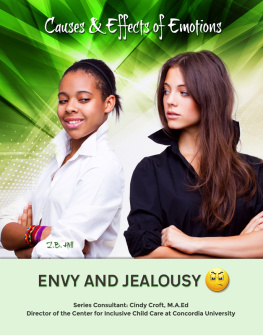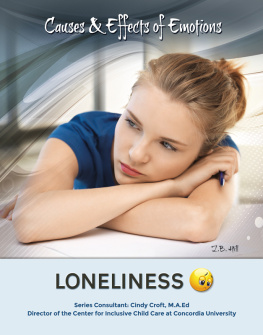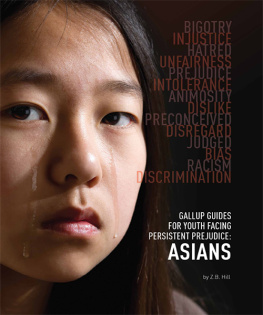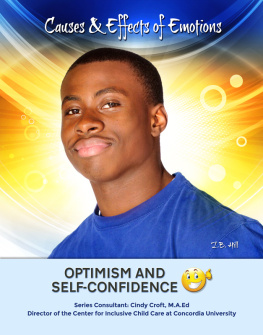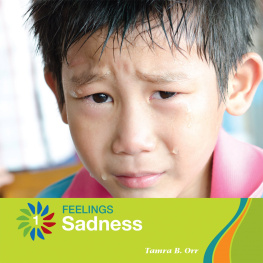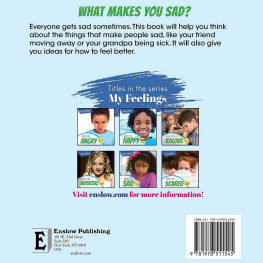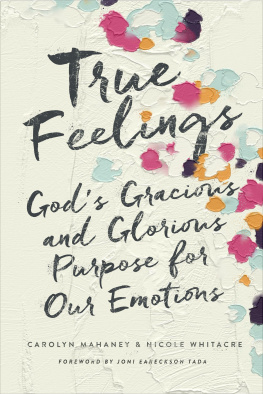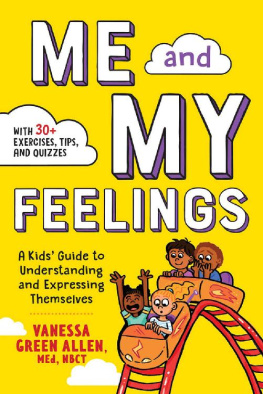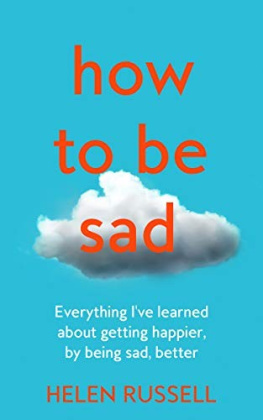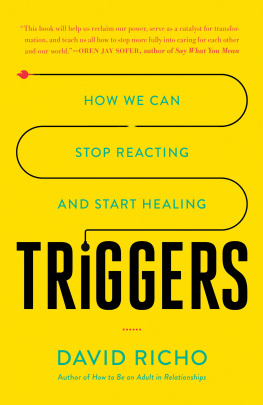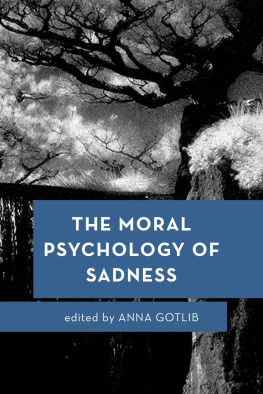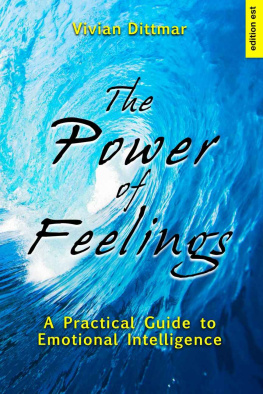Sadness
CAUSES & EFFECTS
OF EMOTIONS

Embarrassment, Shame, and Guilt
Happiness
Fear and Anxiety
Romantic Attraction
Anger
Optimism and Self-Confidence
Stress and Tension
Sadness
Empathy and Compassion
Envy and Jealousy
Surprise and Flexibility
Emotional Self-Awareness
Loneliness
CAUSES & EFFECTS
OF EMOTIONS

Sadness
Z.B. Hill

Mason Crest

| Mason Crest
450 Parkway Drive, Suite D
Broomall, PA 19008
www.masoncrest.com |
Copyright 2015 by Mason Crest, an imprint of National Highlights, Inc. All rights reserved. No part of this publication may be reproduced or transmitted in any form or by any means, electronic or mechanical, including photocopying, recording, taping, or any information storage and retrieval system, without permission from the publisher.
Printed and bound in the United States of America.
First printing
9 8 7 6 5 4 3 2 1
Series ISBN: 978-1-4222-3067-1
ISBN: 978-1-4222-3078-7
ebook ISBN: 978-1-4222-8771-2
Library of Congress Cataloging-in-Publication Data
Hill, Z. B.
Sadness / Z.B. Hill.
pages cm. (Causes & effects of emotions)
Audience: Grade 7 to 8.
ISBN 978-1-4222-3078-7 (hardback) ISBN 978-1-42223067-1 (series) ISBN 978-1-4222-8771-2 (ebook) 1. SadnessJuvenile literature. I. Title.
BF575.S23H55 2014
152.4dc23
2014004384
CONTENTS
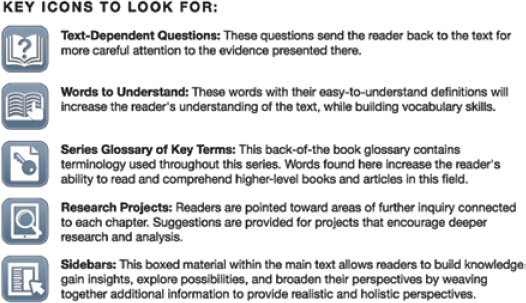
The journey of self-discovery for young adults can be a passage that includes times of introspection as well joyful experiences. It can also be a complicated route filled with confusing road signs and hazards along the way. The choices teens make will have lifelong impacts. From early romantic relationships to complex feelings of anxiousness, loneliness, and compassion, this series of books is designed specifically for young adults, tackling many of the challenges facing them as they navigate the social and emotional world around and within them. Each chapter explores the social emotional pitfalls and triumphs of young adults, using stories in which readers will see themselves reflected.
Adolescents encounter compound issues today in home, school, and community. Many young adults may feel ill equipped to identify and manage the broad range of emotions they experience as their minds and bodies change and grow. They face many adult problems without the knowledge and tools needed to find satisfactory solutions. Where do they fit in? Why are they afraid? Do others feel as lonely and lost as they do? How do they handle the emotions that can engulf them when a friend betrays them or they fail to make the grade? These are all important questions that young adults may face. Young adults need guidance to pilot their way through changing feelings that are influenced by peers, family relationships, and an ever-changing world. They need to know that they share common strengths and pressures with their peers. Realizing they are not alone with their questions can help them develop important attributes of resilience and hope.
The books in this series skillfully capture young peoples everyday, real-life emotional journeys and provides practical and meaningful information that can offer hope to all who read them. It covers topics that teens may be hesitant to discuss with others, giving them a context for their own feelings and relationships. It is an essential tool to help young adults understand themselves and their place in the world around themand a valuable asset for teachers and counselors working to help young people become healthy, confident, and compassionate members of our society.
Cindy Croft, M.A.Ed
Director of the Center for Inclusive Child Care at Concordia University
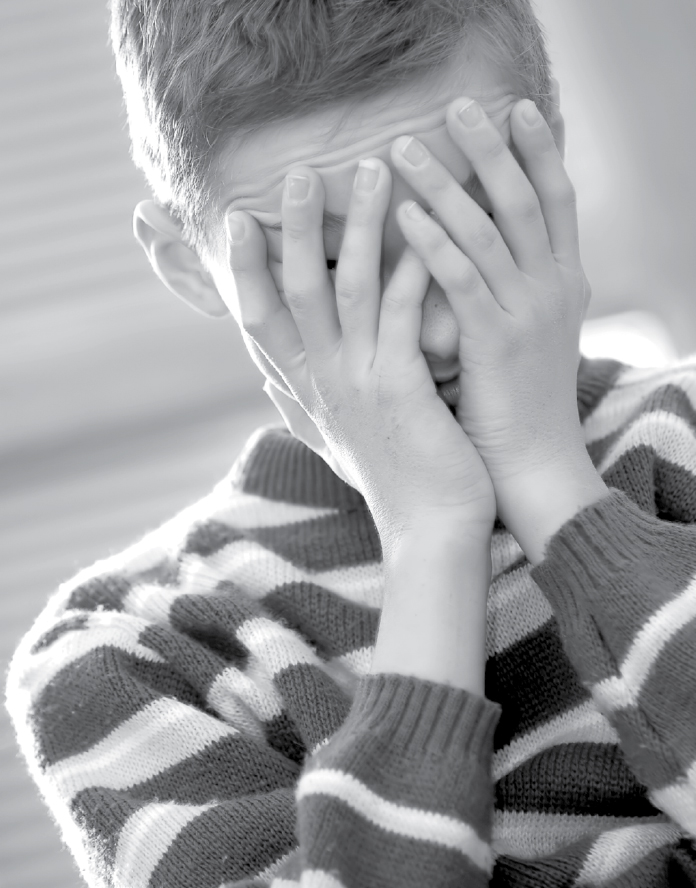
Words to Understand

perceive: See, hear, or sense something.
evolved: Changed over a very long time.
species: A certain kind of life form that is capable of breeding to produce new life forms of the same type.
survival mechanisms: Ways that life forms have evolved to survive in their environment.
distract: Take your attention away from what youre supposed to be doing.
community: The group of people you live with or nearby or with whom you share something in common, such as religion or ethnic background.
phychologists: Experts on the human mind and emotions.
symptoms: Signs that you have a disease. For example, a fever is a common symptom of the flu.
insomnia: Not being able to sleep.
Imagine the following situations:
Your dog dies.
Your best friend moves to the other side of the country.
Your favorite shirt is ruined.
You lose a piece of jewelry youve worn for years.
Your house burns down.
You fail your drivers test.
Your boyfriend or girlfriend breaks up with you.
You lose your new phone.
How do you feel in each of these situations? You may feel a combination of thingsfrustration, disappointment, helplessness, and anger are a few possibilitiesbut chances are your main emotions in each of these situations is sadness.

Each of us feels many different emotions every day. Often, we feel more than one emotion at once.
Sadness is the emotion we feel when weve lost something. It could be a big lossyour dogs death, for exampleor a small lossyour favorite shirt. We feel sad when things arent going the way we want them to. We usually think of sadness as the opposite of happiness. Its one of the main negative emotions human beings experience.
WHAT ARE EMOTIONS?
Emotions are our inner personal experiences in reaction to the world. People used to think that emotions took place in the heart. They thought heart feelings were very different from body feelings. Today, however, scientists believe that what we responses inside us. Weve learned to give all these responses labelslike happiness, sadness, anger, and fear. Many experts think that people actually feel only six main emotionshappiness, surprise, fear, sadness, disgust, and angerand that all the other emotions we experience are some sort of combination or variation of these six.
Youve been feeling emotions your entire life, ever since you were a baby. You probably cant imagine what life would be like without them. Your emotions do an important job. They direct your attention toward things that are important. When something makes you sad, for example, your emotions say, Notice this! This isnt a good situation! Try to change this situation! Or when something scares you, your emotions tell you, Be careful! Your emotions make a bridge between the outside world and the actions you need to take. They help you know what to do next. Ever since you were a young child, youve been learning from your emotions: what makes you happy and what makes you sad, what scares you and what makes you laugh. Then youve learned to adjust your behavior accordingly.
Next page

